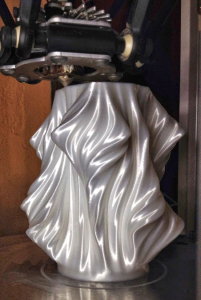Sometimes it is by a return to what is most natural that innovative technology finds a remarkable breakthrough. BioFila appears to have an answer for a fully biodegradable filament that comes in two textures. And to achieve this, the company makes its 3DP filament from lignin. While the link provides an in-depth molecular explanation of the compound, the most exciting aspect of the polymer is its ability to biodegrade, as it does in nature, as part of a wood that eventually turns to humus (not the delicious food, but part of detritus, a necessary component in the circle of life). As of now, BioFila’s filament prints in two forms, silk and linen.

Already in use, the quality of prints and the texture in conjunction with the biodegradable quality are sure to entice proliferated use. As testified on an Ultimaker, “No PLA, a biopolymer based on Lignin instead, no colors so far, just natural – but immaculate print quality and very appealing, slightly rough surface finish.” Another point mentioned on the Ultimaker forum, confirmed by the product’s specs, is the material’s comparatively narrow temperature range below melting point that maintains a liquid state. How available and economically viable will this filament be as an alternative for PLA remains to be seen. Yet, what BioFila presents surely offers an environmentally savvy option that dazzles with its fine as wine elegance.


